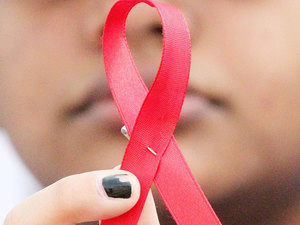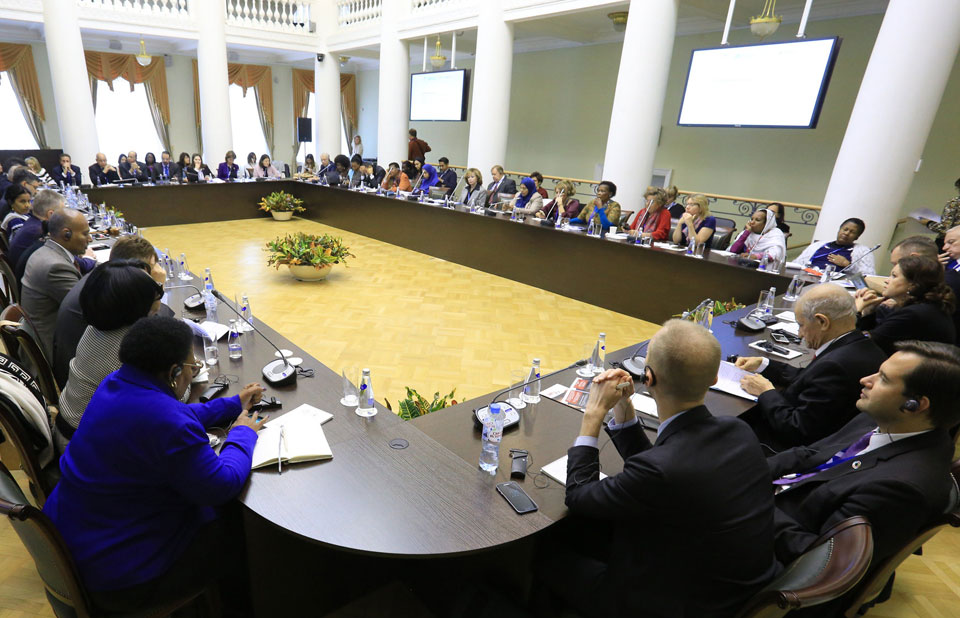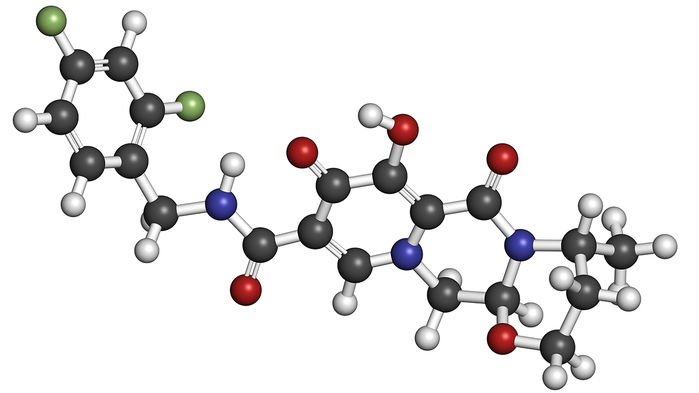The International Community of Women Living with HIV (ICW) is pleased to see that much of our input into earlier drafts of the strategy especially those articulated in the ICW Position Statement on UNAIDS 2016-2021 Strategy is reflected here; particularly regarding the need to include a strong and comprehensive focus on the needs of women and girls living with HIV.
We are very happy to see a section dedicated to women and girls, as well as language about sexual reproductive health and rights (SRHR), engagement of women living with HIV in all our diversities and gender equality more broadly and core actions for the global response to achieve gender equality and empower women and girls.
We note that this strategy has come a very long way from women being mentioned in a footnote and we applaud your efforts! We are hopeful to remain a strong partner to UNAIDS as you finalize and refine this strategy and importantly as you implement and work towards realizing this vision.
Given some of ICW the communities ongoing concerns about the lack of direct and meaningful consultation with women living with HIV regarding this strategy and other efforts by UNAIDS, we look forward to a more gender responsive UNAIDS this document envisions.
ICW notes with particular positive interest that this version of the strategy has included issues key for addressing HIV prevention and treatment among women and girls. In particular ICW is pleased that components touching on SRHR, nutrition, community involvement and capacity strengthening, aging and Non Communicable Diseases (NCD’s) have been included. We feel that the strategy is much improved but must be improved further, particularly regarding practical strategies for implementation of the plan for women and girls living with HIV.
We are therefore pleased to share in a spirit of support for the progress shown the following key observations and recommendations with the UNAIDS team.
Over Arching Concerns
• Increase focus on maternal health outcomes for women living with HIV is needed.
• Include practical steps to action SRHR, gender equality, human rights and issues impacting women living with HIV at the regional level is needed.
• We reiterate the need for explicit focus on the engagement of women living with HIV throughout these processes including and most importantly during implementation.
• Ensure a strong and consistent focus throughout on women’s autonomy on their lives and health beyond motherhood.
• Review the Strategic Development Goals (SDG’s) targets; although we understand UNAIDS cannot prioritize all of them as cross-cutting targets- there are many that could and should be references as support for different aspects of UNAIDS programming that are not included throughout this document.
Violence Against Women Living with HIV
• We applaud the inclusion of a focus on eliminating all forms of violence against women living with HIV
• We request that the institutional violence and violence in health care settings including maternal health care settings be mentioned as a form of violence experienced by women living with HIV.
• We suggest that Target 5.1 & 5.2 of the SDGs be used as a cross-cutting target/issue for framing this strategy emphasis on ending all gender discrimination (Target 5.1) and eliminating gender-based violence (5.2).
Keeping Mothers Alive-PMTCT & Maternal Health
• We note with concern the missing targets for maternal mortality and strategies for ensuring PMTCT programs focus on keeping mothers alive. Maternal mortality rates are 7-8 times as high among women living with HIV.
• To this end we suggest that target (3.1) under Goal 3 should be specifically emphasized within the strategy as a cross-cutting/intersecting issue/target for framing within the SDGs and contribute towards 3.1 By 2030, reduce the global maternal mortality ratio to less than 70 per 100,000 live births.
• We note with positive interest section and recommend that although the international community is called upon to sustain and strengthen efforts to PMTCT, its implementation (HIV testing and treatment initiation) must comply with basic human rights principles including informed consent which must be explicitly referenced in the text; especially during HIV testing and initiation to ART.
• It is also critical that efforts at partner involvement do not become mandatory requirements for partner involvement which poses a significant barrier for women living with HIV in seeking PMTCT services.
• We recommend a focus on ensuring existence of the focus towards keeping mother alive beyond prevention of vertical transmission. This focus is currently missing in the strategy.
• Regarding early infant diagnosis, mother s and women living with HIV should be given adequate information and choices for early infant diagnosis. Furthermore the strategy needs to ensure that implementation of testing complies with basic human rights principles including informed consent.
Human Rights
• We applaud the increased focus on protection and promotion of human rights as a facilitator of the HIV response and recognition of the role of civil society and particularly networks of people living with HIV to advance the human rights of people living with HIV.
• We propose the inclusion of discriminatory and abusive treatment and attitudes from health service providers in.
Sexual and Reproductive Health and Rights
• Although issues related to SRHR is a cross-cutting issue for us across regions, not much is highlighted for specific regions among the gaps and challenges and there are no specific interventions recommended as game changers to respond to our SRHR related issues by regions.
• The last sentence should state “urgent investment in adolescent and youth friendly sexual and reproductive health services including HIV testing and treatment is needed to close access gaps.”
• We must also include strong focus on support for women and mothers beyond preventing vertical transmission and address women beyond motherhood particularly we recommend focus on comprehensive SRHR services, which include family planning, access to contraceptives, STI screening and treatment for Syphilis and Cervical cancer among others.
Engagement of Women Living with HIV
• There is interchangeable use of the words Civil Society and Communities/Networks of people living with HIV in the document. A definition is needed and explicit reference to people and women living with HIV is suggested.
• We recommend clear definitions and roles for networks of people and particularly women living with or affected by HIV including key population networks. This is particularly helpful for articulating a vision as to how women living with HIV will be engaged and involved in the roll out and implementation of this strategy at global and regional and or country levels.
• We would like to see an explicit inclusion of indigenous women in this document.
Rural/Urban Divide
• In the spirit of the Post-2015/SDG concept of “leaving no one behind” the strategy needs to prioritize populations from rural settings and special groups like indigenous populations who aren’t it seems this strategy focuses largely on urban centres and does not mention much about the needs of those in rural settings.
• The sentence ‘Priority-setting and focus: location and population more important than ever before’ seems to replicate the PEPFAR programmatic shift with a geographic and population focus in their countries of operation. The challenge with this approach is that some countries/districts/cities may report low HIV incidence which could be a result of poor model of service delivery used by the implementing partner as opposed to actual lack or need.
• We recommend that the decision on priority setting and focus in terms of location and population should be based on accurate epidemiological data and also should consider the HIV dynamics in various countries.
• Countries with a generalized epidemic and persistently high prevalence nationwide, withdrawal of services has very different ramifications than in other countries where the epidemic is more focused geographically.
Actionable Strategies
• ICW welcomes the identification of core actions which we feel are well presented however it is unclear how these core actions relate with regional goals and strategies for achieving laid out with primary targets and game changers. The strategy does not articulate how the UNAIDS will action the gender equality/human rights goals in the regions and the regional focus sections are missing any significant reference to gender related goals. It is critical that UNAIDS explicitly outline how it intends to action its goals around SRHR, Maternal health, gender equality, human rights, community engagement at the regional level.
A Holistic Approach to Living with HIV
• ICW further recommends that the strategy encompasses a broader ‘systems thinking’ approach linking to women and girls across all our life cycle including how HIV affects and is affected by all the SDG’s and not only those highlighted in the draft.
Practical Actions on Trips
• The emphasis on this paragraph and other pages is on the impact of intellectual property on access to treatment and supporting countries to incorporate TRIPS flexibilities to reduce cost of antiretroviral medicines and other commodities. However, the UNAIDS Strategy does not explicitly show how it is going to support LDCs to achieve indefinite extension of the 2002 pharmaceutical extension decision which expires 1 January 2016.
• The 2002 pharmaceutical extension decision explicitly states that with regard to “pharmaceutical products” LDCs are not required “to implement or apply” patents (Section 5 of the TRIPS Agreement) or to “enforce rights” provided for under those Sections until 1 January 2016 which is not far from now. Majority of people living with HIV are women and girls and majority of the people living with HIV in LDCs who are initiated on ART, access generic lifesaving commodities including ARVs.
Prevention Focus
• We note with concern and seek justifications for the UNAIDS estimates that one quarter of global HIV funds should be allocated to prevention efforts other than antiretroviral therapy. We are in the era where HIV funding is dwindling and there are still people who are eligible for HIV treatment but are not yet on ART.
Nutrition
• Food and nutrition interventions with a particular focus on cash transfers should be implemented in such a way that it accommodates prevention with positive adolescent girls and young women. We have concerns about the effectiveness of cash transfer programs and concerns about their coercive nature. Current cash transfer programs that focuses solely on those not living with HIV, reinforce the already existing differential treatment, yet those who are living with HIV and those who are not living with HIV do not live in isolation from each other.
Tuberculosis (TB) & Women Living with HIV
• This paragraph needs to include a gender focus because TB affects women and men differently. TB is particularly lethal for women living with HIV because of the caring role but also because they have poor access to health services, making them particularly vulnerable to poorer outcomes linked to undetected or late detected TB disease. Women face acute risks of TB/HIV co-infection and subsequent TB disease and TB is among the top killers of women of reproductive age.
ICW remains committed to continued collaborative consultation with UNAIDS and other stakeholders to ensure that the UNAIDS 2016–2021 Strategy meets the needs and protects the rights of women and girls living with HIV.





